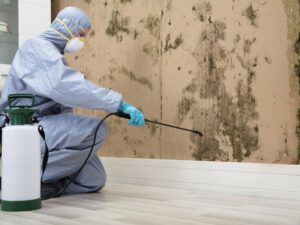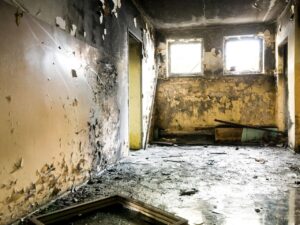Services
Fast, prompt response to any sewage spills or sewage overflow is essential due to the considerable health and safety risks and cross-contamination risks associated. Your home and contents may look damaged beyond repair, however, with a prompt and effective Bronx Sewage Clean up response, much of your home, and many possessions can be restored. Sewage is, of course, a major carrier of disease and harmful pathogens, and is especially harmful to small children. In fact, some of the biggest and most devastating epidemics in history have been a direct result of mismanaged sewage systems and waste management.
Sewage leak contamination
Bronx Sewage clean-ups, if not attended to immediately, can have serious, long-term consequences. A sewage spill or septic tank overflow in your home is a disgusting, and distressing occurrence, not to mention costly and hazardous. Our Bronx clean up specialists should be called immediately to help minimize loss and the possibility of adjacent and nearby soil or ground water becoming contaminated.
In the unfortunate instance of a sewage back-up or spill, it is of the upmost priority you call us immediately. We recommend you do not attempt to handle the situation on your own due to the pathogens, disease and bio-hazardous nature of the spill.
If a Bronx sewage spill or septic tank overflow occurs in your home, we advise you adhere to the following recommendations to ensure the health, safety and wellbeing of yourself and others, and to minimise the possibility of cross-contamination of other areas:
A sewage backup of any scope proves troublesome for homeowners. It causes a great deal of hassle and disruption, as well as an increased risk of contamination and illness. While perhaps not as destructive as a tornado or hurricane, a sewage backup brings its own set of unique problems.
During the cleanup process, your home might be uninhabitable. The risk of illness is too great for your family to remain in the area. Therefore, sewage backups must be dealt with quickly and efficiently. You’ll want to hire a professional restoration company to tackle the mess.
Depending on the severity of the sewage backup, you can take some steps to mitigate damage, salvage possessions, and provide a sense of relief. However, we do not recommend performing sewage cleanup without the assistance of an experienced restoration team. Mitigation is one thing; the full cleanup is another.
After a Sewage Backup
Regardless of how the sewage backup happened, there are some precautionary steps to take immediately. These include:
Cleaning Sewage Backups
Even if you plan to hire a local restoration company, you’ll want to at least begin mitigating the sewage damage. Cleaning up sewage backup is an unpleasant, difficult task. DIY methods should only be used for minor spills or those confined to a relatively small part of the home.
Again, we only recommend DIY sewage cleanup for minor messes. For more significant damage, don’t hesitate to call a local restoration company offering sewage removal and cleanup services. The results you receive from professionals – who are equipped with advanced restoration equipment – are well worth the cost.
In the event of a severe sewage backup, pick up the phone and call your local Restoration 1. We offer 24-hour sewage removal services nationwide!

Mold is a microscopic life form found in all parts of the world and is part of the natural decomposition of organic materials. Mold requires three things to grow: nutrients.

Mold remediation is taking action to reduce, isolate, or remove contamination from an environment with the goal of preventing further reproduction and spreading.

Mycotoxins are toxins that help defend fungi against other molds. It is the mycotoxins produced by fungi that physicians think have negative health consequences on humans
Get Mold Removal Services at Home
FAQS

Mold requires nutrients, water, oxygen and favorable temperatures to grow. Nutrients for mold are present in dead organic material such as wood, paper or fabrics; mold can also derive nutrients from some synthetic products such as paints and adhesives. Mold requires moisture, although some mold species can obtain that moisture from moist air when the relative humidity is above 70 per cent.
Many molds thrive at normal indoor temperatures; few if any molds are able to grow below 40 F or above 100 F. Outside this range molds may remain dormant or inactive; they may begin to grow again when the temperature is more favorable. Temperatures well above 100 F will kill mold and mold spores, but the exact temperature required to kill specific species is not well established.
The time it takes for the mold removal process depends on many factors such as how much mold is present, where the mold is growing (behind walls, etc.), and the materials it grows on. Most mold removal (remediation) takes anywhere from 1 day to 5 days.
If you have any questions about the mold removal (remediation process), please call us at the number at the top of the page.
Mold remediation is the process of removal and/or clean up of mold from an indoor environment, such as a home or a business.
If a home or a business has serious mold damage, it is best to hire mold remediation/removal professionals as specialized equipment and methods may be required to remove the mold completely.
Please call us at the number on the top of the page for mold remediation and removal services, 24 hours a day, 7 days a week.
Actually there are no problems in using a company that does both mold testing and mold removal and remediation until:
Although it makes sense (and may save you time) in the beginning using a company that does both testing and removing mold, what happens in the end may create situations that are critically worse.
We don’t rest until every linear foot of your ductwork is free of the dust, dander, lint and dirty debris that’s been collecting inside since your last service.